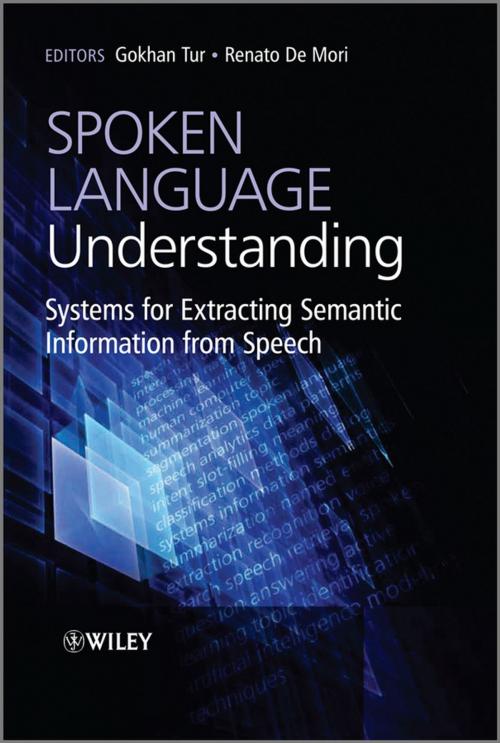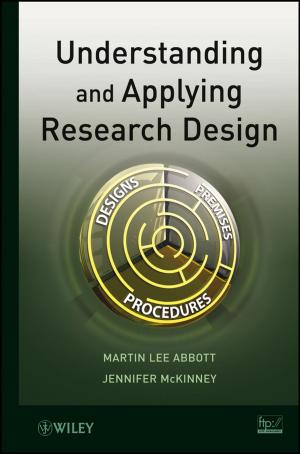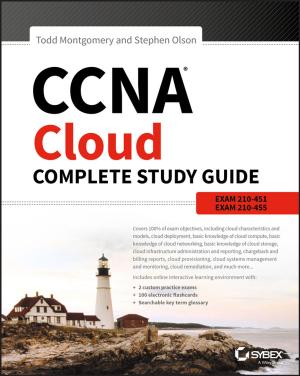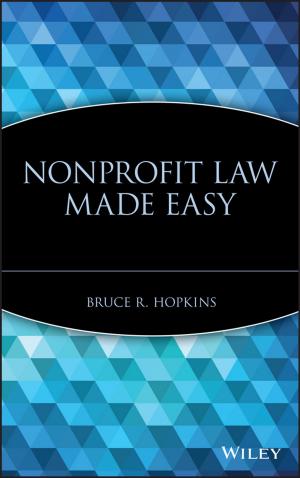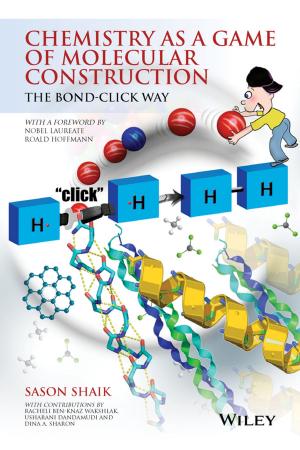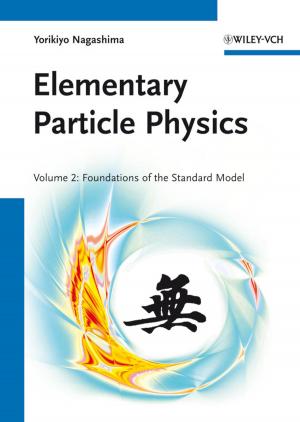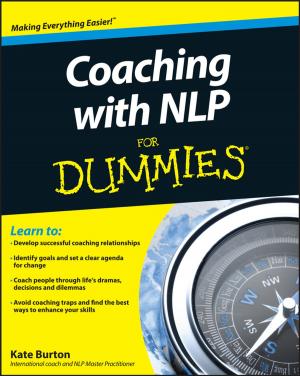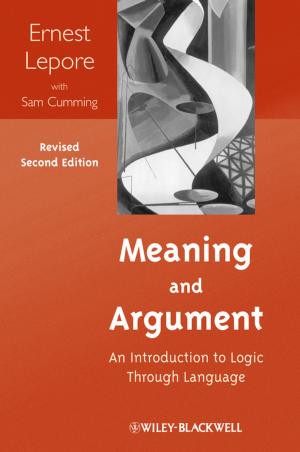Spoken Language Understanding
Systems for Extracting Semantic Information from Speech
Nonfiction, Reference & Language, Language Arts, Public Speaking, Speech| Author: | Gokhan Tur, Renato De Mori | ISBN: | 9781119993940 |
| Publisher: | Wiley | Publication: | May 3, 2011 |
| Imprint: | Wiley | Language: | English |
| Author: | Gokhan Tur, Renato De Mori |
| ISBN: | 9781119993940 |
| Publisher: | Wiley |
| Publication: | May 3, 2011 |
| Imprint: | Wiley |
| Language: | English |
Spoken language understanding (SLU) is an emerging field in between speech and language processing, investigating human/ machine and human/ human communication by leveraging technologies from signal processing, pattern recognition, machine learning and artificial intelligence. SLU systems are designed to extract the meaning from speech utterances and its applications are vast, from voice search in mobile devices to meeting summarization, attracting interest from both commercial and academic sectors.
Both human/machine and human/human communications can benefit from the application of SLU, using differing tasks and approaches to better understand and utilize such communications. This book covers the state-of-the-art approaches for the most popular SLU tasks with chapters written by well-known researchers in the respective fields. Key features include:
- Presents a fully integrated view of the two distinct disciplines of speech processing and language processing for SLU tasks.
- Defines what is possible today for SLU as an enabling technology for enterprise (e.g., customer care centers or company meetings), and consumer (e.g., entertainment, mobile, car, robot, or smart environments) applications and outlines the key research areas.
- Provides a unique source of distilled information on methods for computer modeling of semantic information in human/machine and human/human conversations.
This book can be successfully used for graduate courses in electronics engineering, computer science or computational linguistics. Moreover, technologists interested in processing spoken communications will find it a useful source of collated information of the topic drawn from the two distinct disciplines of speech processing and language processing under the new area of SLU.
Spoken language understanding (SLU) is an emerging field in between speech and language processing, investigating human/ machine and human/ human communication by leveraging technologies from signal processing, pattern recognition, machine learning and artificial intelligence. SLU systems are designed to extract the meaning from speech utterances and its applications are vast, from voice search in mobile devices to meeting summarization, attracting interest from both commercial and academic sectors.
Both human/machine and human/human communications can benefit from the application of SLU, using differing tasks and approaches to better understand and utilize such communications. This book covers the state-of-the-art approaches for the most popular SLU tasks with chapters written by well-known researchers in the respective fields. Key features include:
- Presents a fully integrated view of the two distinct disciplines of speech processing and language processing for SLU tasks.
- Defines what is possible today for SLU as an enabling technology for enterprise (e.g., customer care centers or company meetings), and consumer (e.g., entertainment, mobile, car, robot, or smart environments) applications and outlines the key research areas.
- Provides a unique source of distilled information on methods for computer modeling of semantic information in human/machine and human/human conversations.
This book can be successfully used for graduate courses in electronics engineering, computer science or computational linguistics. Moreover, technologists interested in processing spoken communications will find it a useful source of collated information of the topic drawn from the two distinct disciplines of speech processing and language processing under the new area of SLU.
